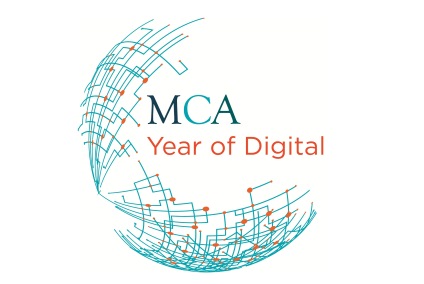As the MCA's Year of Digital work is illustrating, Digital is reshaping client demands for consulting expertise. It is also changing how consulting is done. This applies to wide scale transformation, as well as staples of change, such as programme and project delivery.
In markets such as Technology, Media and Telecommunications, we are seeing an aggressive push to get new services and products to market. This is especially true in telecoms and is driven from three key forces:
- New Technology. When new products are developed there is pressure to get the product to market as quickly as possible ahead of potential rivals and become dominant. Recently this has been seen in connected wearables such as fitness bands, with Google Fit and Apple Fitness looking to lock customers in to their health platforms
- Competitor Catch Up. Companies seek to close the gap quickly on a competitor that has launched a new product or service. This is being seen with mobile media platforms, for example Over The Top (OTT) catch up TV content such as Amazon Prime and Netflix
- Customer Pull. Customer behaviour demands new products and services, such as bundled offerings bringing together broadband, TV, fixed and mobile
This pressure means that traditional approaches to implementing programmes are viewed as clumsy, potentially bureaucratic and putting a spanner in the works of entrepreneurial spirit and invention. Alternative approaches with rapid mobilisation, often termed agile, can be so disjointed that the word becomes a synonym for chaos. Products and services are rushed to market and delivery windows, particularly in the latter stages, are compressed. The testing horizon narrows, replacing full regression testing with ‘SMART’, light-touch, risk-based approaches, or even a minimum product offering launched with reduced testing, which is then refined and assessed in the live environment.
Clearly there is real danger in this approach. It can damage the customer experience, erode the brand and ultimately lose business.
Squeezing delivery windows from concept to market increases complexity and risk, but the problem is not going to go away. In the Digital Age, product and service delivery is perceived as something that needs to be swift, with a try everything culture, made possible by the perception that Digital is reducing the costs of innovation and allows ideas to be tried out often in real-time scenarios where identifying failure is as important as rapid success so long as organisations learn quickly.
While this is true in many cases, there can still be problems, especially where delivery is beset by organisational politics. Marketing, Sales or Digital functions may offload the problems associated with the building and launch of a new innovation to an organisation's planning and delivery areas – often involving technical IT. As a result, this area of the organisation suffers the immediate impact of criticism when the customer experience during the launch is poor. This is only compounded with the increased use of social media to convey real-time consumer emotions and ultimately leads to an endless flow of reactive change requests adjusting products and services during the launch phase.
Relying on “Customer Forgiveness” in these circumstances is a high stakes game, heavily dependent on existing levels of goodwill, reputation in the market, the leading edge nature of the product or service itself and quite often the age profile of the target customer group. Apple can get away with it. They launch leading edge products and customers jostle to be first in line to get them. The customer accepts, to a degree, the inevitability of launch issues and service updates as the products are tuned in the live environment. The customer becomes a technical innovator and part of a design and re-design cycle which completely resets the parameters of the ‘perfect’ launch. We are certainly seeing more and more of this as consumers compete to be part of beta launch versions of new operating systems and programmes from organisations like Apple. Many other organisations try to adopt this approach but few enjoy Apple’s identity and loyal customer following.
What does this mean for consulting?
Currently, there is an increased demand for contractors as a way of augmenting resource to fill gaps in both capacity and capability. This is often a tactical response to a strategic challenge and means that clients do not have access to the broader corporate knowledge and experience that established consultancies provide and that ultimately drives sustainable value.
The changing nature of delivery demands a more thoughtful and a connected approach, combining agility with more traditional sequenced planning at key points. Here, consulting can really add value.
Whilst the real-time information Digital makes available can help manage the reduced delivery time frames, consultants can also help clients understand the risks they face. Organisations must be clear about what they want to be in their respective market and need to be ambitious on how they achieve, maintain and improve their desired position and identity. Establishing a portfolio approach to how they do this is really important. Capacity and capability are resource limitations that necessitate prioritisation and strategic clarity. Delivery in ever decreasing timescales is complex and requires a wider strategic approach, insight, flexibility and intelligent risk management, especially as dependencies and quality/timing tolerances get squeezed.
The Moorhouse ‘Barometer on Change’ for 2014, based on a survey of 200 board members with an annual transformation spend of £4.2bn, identified the need for strategic clarity and an aligned change portfolio. It also stressed the importance of embracing change as leaders felt the pace and pressure of rapid service and product delivery increasing in their organisations.
Pulling it all together, managing the tensions and priorities, whilst delivering successful change, is now defined as the intelligent PMO that supports delivery. Every organisation engaged in rapid Digital innovation should consider harnessing intelligent PMO disciplines, since these successfully support entrepreneurial spirit in the market. A series of fast and suboptimal launches could end up being one long, slow expensive brand failure. So this is an area where it pays to invest. An intelligent PMO – lean and responsive for the Digital Age – de-risks the environment and can help firms deliver market leading propositions and services strategically and effectively – whilst still leading the pack.
Written by Richard Brackstone, Client Director at Moorhouse, as part of the MCA Year of Digital. 

